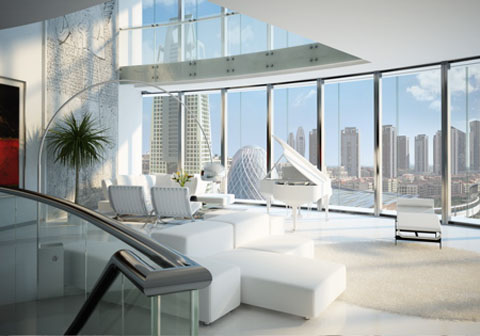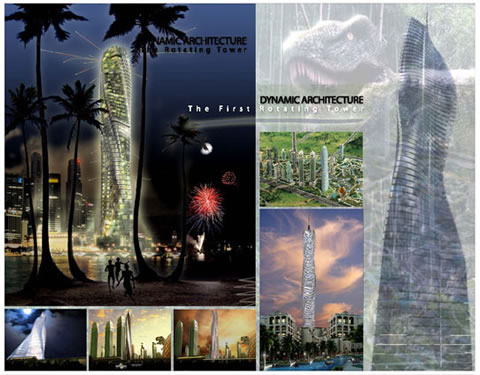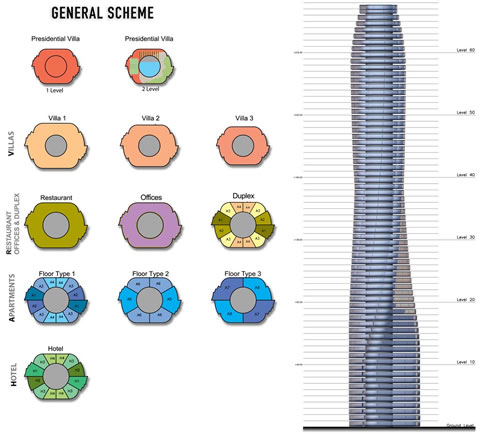Architect Glenn Howells‘ design for Time Residences in Dubai is getting everyone’s attention. The 30-story apartment tower is powered by solar energy, the entire building turns 360 degrees over the course of seven days. The building will contain 200 one- to four-bedroom apartments.

A statement from the architect, Glenn Howells, follows: “The is an eco-friendly sustainable design, using solar power to revolve the cylindrical form and recycling water to irrigate the landscaped gardens.
Our designs for the unique segment-shaped apartments maximize external awareness and provide panoramic views for residents. This introduces a revolutionary new way of living in Dubai by providing cool, calm luxurious spaces that open up through the use of sliding screens to offer unparalleled levels of flexible space and views of the city through floor-to-ceiling glazing.”
The Time Residences is an eco-friendly sustainable design, using solar power to revolve the cylindrical form and recycling water to irrigate the landscaped gardens, both natural sources.
The concept for the façade design has evolved through the use of intricate layers and textures that also help to address the extreme heat conditions in Dubai while providing the residents with energy-efficient control of their internal environment.
The dual-skin breathing façade creates a dynamic appearance and adds depth to the building with interesting materials including high-performance glass with neutral coating and gold screens.
The strong tower form is anchored by a 20m high horizontal podium and crowned by an elegant crescent, both adding to the creation of this kinetic icon.
In addition, residents can enjoy exclusive facilities including the gymnasium, an outdoor pool, and the moon lounge at the top of the tower.

The Dynamic Architecture building, designed by David Fisher, which will be constantly in motion changing its shape, will be able to generate electric energy for itself as well as for other buildings. Forty-eight wind turbines fitted between each rotating floor as well as the solar panels positioned on the roof of the building will produce energy from wind and sunlight, with no risk of pollution. The total energy produced by this inbuilt ‘powerhouse’ every year will be worth approximately seven million dollars.

Each turbine can produce 0.3 megawatts of electricity, compared to 1-1.5 megawatt generated by a normal vertical turbine (windmill). Considering that Dubai gets 4,000 wind hours annually, the turbines incorporated into the building can generate 1,200,000 kilowatt-hours of energy.
